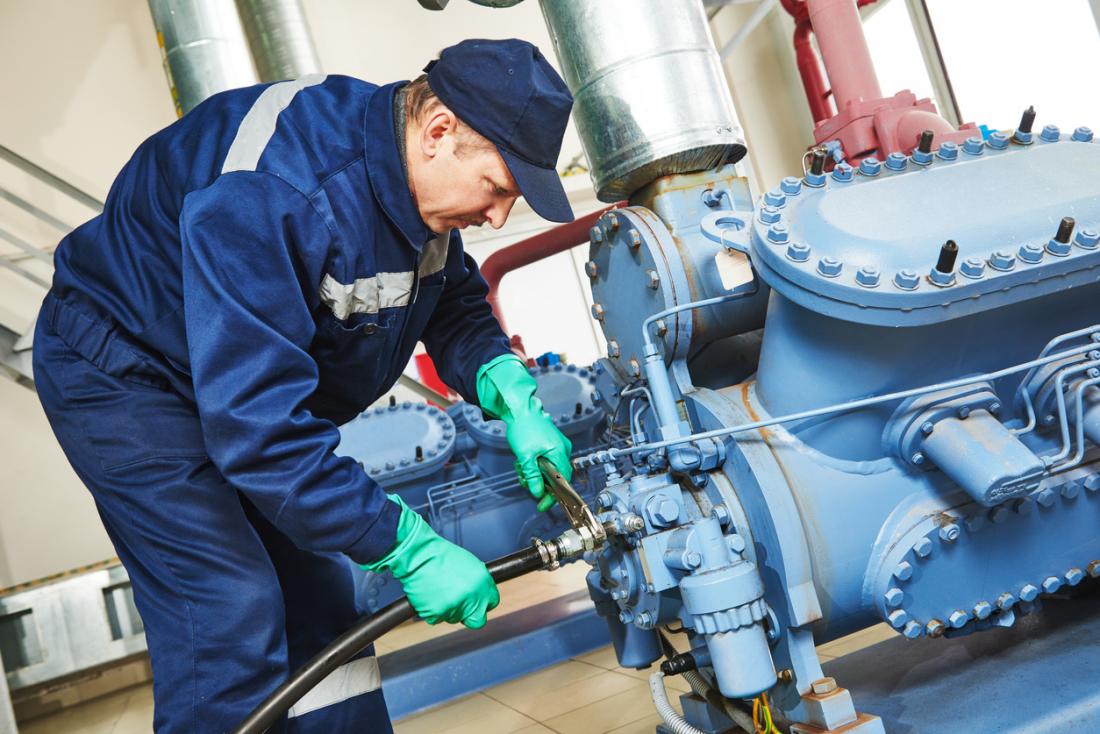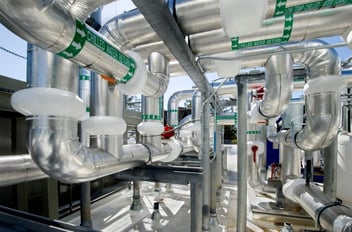Before performing a seasonal startup, verify that:
- all valves are in their proper operating positions;
- refrigerant charge, compressor oil levels, and condenser/chilled water flows are normal;
- ventilation system is operational; and
- emergency shutdown switch is operational.
Startup activities
Startup activities should form part of a comprehensive program that includes commissioning, proper seasonal shutdown procedures, and a regular maintenance program. A well-maintained refrigeration system that goes through a rigorous safety program has a lower risk of experiencing an ammonia release incident.
Carry out CSA B52 Mechanical Refrigeration Code maintenance and inspection activities, along with the manufacturer’s maintenance recommendations
At minimum, always follow manufacturer recommendations and checklists as per their operating and maintenance manuals before the startup. These maintenance activities include, but are not limited to, the following:
- Calibrate and test the permanent space detector at least once a year.
- Test all safety devices, including pressure-limiting devices, at least once every 12 months for set-point accuracy and for their ability to properly stop the affected equipment.
- Inspect all refrigerant lines for physical damage (keep a look out for corrosion).
- Inspect all refrigerant lines, components, valves, joints (including welded joints) for ammonia leakage.
We also recommend consulting other adopted code requirements and industry-accepted practices.
Check and test all safety/operating devices
Safety/operating devices include, but are not limited to, pressure limiting devices, high-level switches, low-level switches. If any of these safety/operating devices fail to function properly, take corrective actions, and do not start the unit unless the devices are functional.
Please note that additional risk assessments are required all refrigeration plants that are registered as “Risk Assessed”.
Review all the operational parameters
Check and compare system pressures and temperatures to the original startup log to be certain the chiller is running optimally and safely. Record and log all operating parameters, startup events and findings.
Conduct a vibration analysis
A qualified individual should perform a vibration analysis at least annually to ensure that both the compressor and motor are in good working condition. This procedure can help you to identify any issues before a catastrophic failure occurs, avoiding safety hazards, downtime and repair costs. The best time to conduct a vibration analysis is at full-load conditions. If the adequate load is not available at startup, return and perform this test when the chiller is operating at full-load. In any case, compare the results of the analysis with earlier baseline results. If baseline readings were never gathered, it is never too late to start this valuable procedure. Tracking trends in your vibration analysis test results help identify changes over time that may indicate problems that require corrective actions.
Review safety orders: operation of ammonia refrigeration plants in public occupancies
Owners of refrigeration plants in a public assembly occupancy facility, which includes ice rinks and curling rinks, are also required to comply with the following safety orders:
- Safety Order: Operation of ammonia refrigeration plants in public occupancies; and
- Safety Order: Ammonia refrigeration systems in public occupancies.
If you have any questions, please comment below or contact us and a boiler safety officer will get in touch with you.




